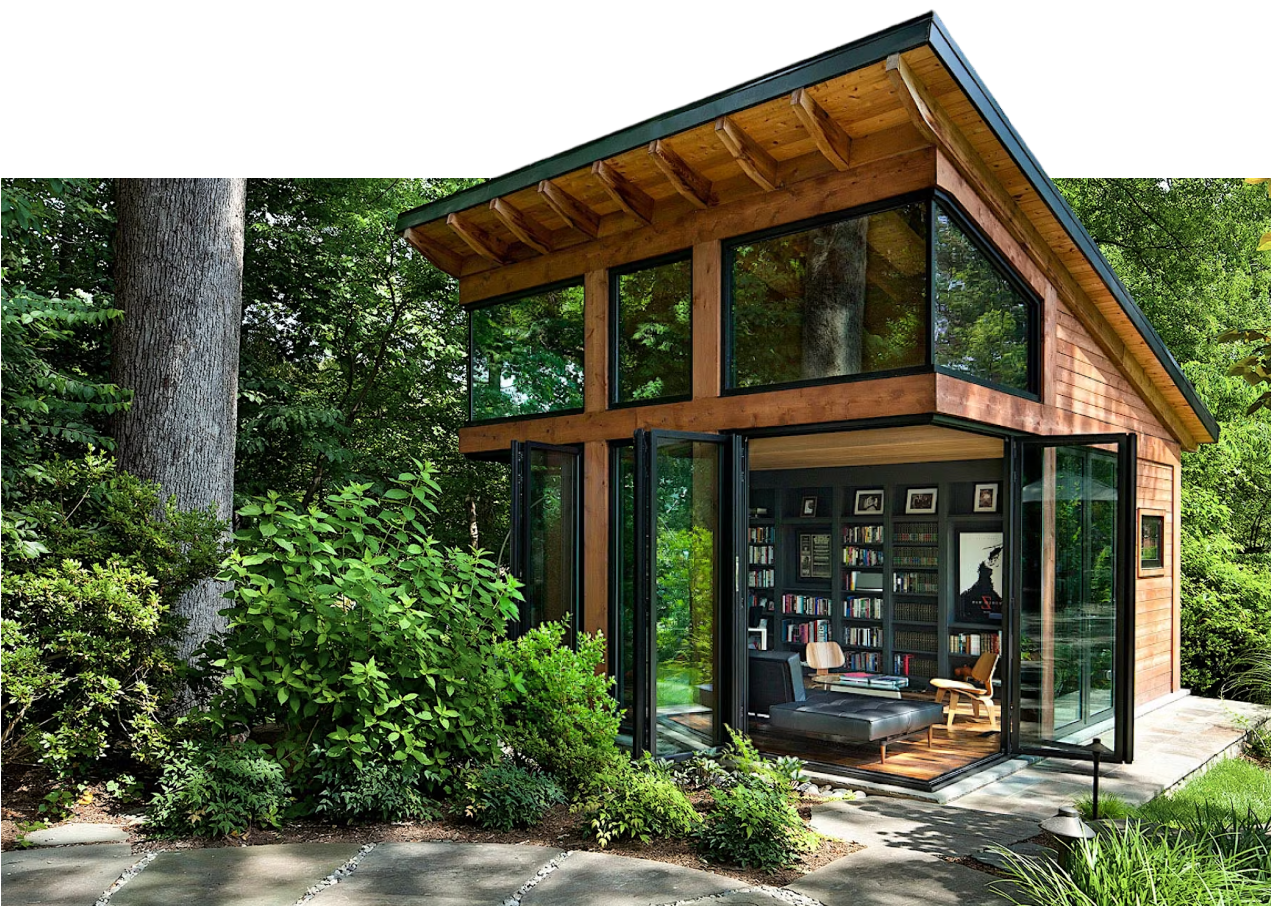The leading source for ADU related information
Everything You Need to Know About ADUs in California
Whether you’re looking to generate income, expand your living space, or add value to your property, we’re here to guide you every step of the way.

Save Money
Reduce costs with proven methods.

Build Faster
Streamline approvals and timelines.

Expert Support
Access guidance from seasoned pros.

Avoid Mistakes
Prevent costly errors
with ease.

Guide to Adding an ADU to Your Property: Essential Tips
Guide to Adding an ADU to Your Property: Essential Tips
CalHFA's ADU Grant Program provides up to $40,000 in funding for the addition of accessory dwelling units (ADUs) to your property. As a result, countless homeowners are making renovations to reap the benefits these can provide. Building an Accessory Dwelling Unit can be a rewarding investment, providing extra space for family or generating rental income.
However, the process can seem overwhelming without the right guidance. In this guide, you'll find essential tips on selecting the perfect design to make your ADU project a success. Let's take a closer look at what you need to know when adding an ADU to your property.
Check Zoning Rules First
Zoning laws are crucial when planning an ADU. California has certain restrictions about where and how you can build.
Some areas might limit the size or height of an ADU, while others could restrict how close it can be to neighboring properties. Understanding these regulations early will prevent costly mistakes down the road.
It's also essential to consider parking requirements and occupancy limits before moving forward. Following the right ADU building guide can help ensure your project stays compliant with local rules.
Match the ADU Design to Your Home
Choosing a design that complements your existing home creates a seamless look. Whether your home is modern or traditional, there's an ADU design that can fit perfectly.
Avoid designs that clash with the main house, as it can negatively impact curb appeal. Incorporating similar colors and materials will make the ADU feel like an extension of your home rather than an out-of-place structure. A well-matched design not only looks amazing but could also contribute to a property value increase when it's time to sell.
Choose the Right Location
The location of your ADU is just as important as the design. It's essential to find a spot on your property that provides enough privacy for both the ADU and the main house. You'll also want to consider the amount of sunlight and whether the space has easy access to utilities like water and electricity.
Be mindful of the flow between the ADU and the main house to ensure it's practical for future use. A backyard home addition, for example, can be an ideal way to preserve privacy while making the most of your available space.
Set a Clear Budget
Before starting construction, it's important to have a solid budget in place. ADU construction costs can vary greatly depending on materials and the size of the unit.
To avoid unexpected expenses, plan out every detail, including permits and any utility upgrades. Make sure to factor in potential delays or issues that could arise during the process. Sticking to a budget ensures you don't overspend while still creating a functional and attractive ADU.
Explore Financing Options
Financing your ADU can be manageable with the right approach. Home equity loans or even cash-out refinancing are common ways to fund these projects.
It's smart to meet with a financial advisor to understand which option works best for you. Also, researching local programs or incentives for ADU building may help reduce costs. By finding the right financing, you'll avoid stressing over how to pay for your backyard home addition.
Maximize Space in the ADU
Smaller spaces require smart planning to make them feel spacious and comfortable. Built-in storage and open layouts help maximize square footage when building.
You can also use large windows and light colors to make the area feel more open. Every inch counts when designing an ADU, so thoughtful planning is key. Following these Accessory Dwelling Unit tips will make sure your space is both efficient and welcoming.
Use Energy-Efficient Materials
Sustainability is a key factor when building an ADU. By choosing energy-efficient materials, you can reduce utility bills and make your ADU more eco-friendly.
Consider using energy-efficient windows and solar panels to keep the structure comfortable throughout the year. These upgrades may increase your initial construction costs, but they'll pay off in the long run with lower energy expenses. Green building practices can also make your ADU more appealing to future buyers.
Ensure Privacy for Both Units
Privacy is essential when you have two homes sharing a property. Consider placing the ADU at a distance from the main house or using landscaping to create natural barriers. Trees and fences can provide separation without making the yard feel closed off.
In addition to physical barriers, think about soundproofing materials for the ADU to minimize noise transfer between the two homes. Prioritizing privacy ensures both you and your ADU tenants enjoy a peaceful living experience.
Get Permits Before Building
Skipping permits can lead to legal troubles and additional costs. Before construction begins, check with your local planning department to learn what permits are required for your project. These permits usually cover aspects like:
Plumbing
Electrical work
Structural safety
Applying for permits early in the process can prevent delays once construction begins. Following legal guidelines from the start helps avoid unnecessary fines and ensures your ADU is built to code.
Hire an Experienced Contractor
Hiring the right contractor can make or break your project. Look for contractors who specialize in ADU construction and have a portfolio of successful projects. Ask for references and check online reviews to ensure they have a good reputation.
It's also important to get a detailed quote upfront to avoid any unexpected expenses during the project. Partnering with a skilled contractor will make your ADU project go smoothly from start to finish.
Design a Flexible Floor Plan
A well-designed floor plan should be both functional and flexible. Open layouts allow for easier movement, while multi-purpose rooms can serve different functions over time. Think about how the ADU might be used in the future, whether as a:
Rental
Guest house
Home office
By creating a flexible floor plan, you ensure the space will be useful for years to come. Don't forget to plan for storage, which is often limited in smaller homes.
Plan Your Landscaping Appropriately
Landscaping can enhance the look of your ADU and create a more inviting outdoor space. Consider adding pathways and outdoor lighting to make the area around the ADU feel welcoming.
Landscaping can also help improve privacy by adding natural barriers between the ADU and the main home. Well-designed outdoor areas increase the overall appeal of your property. A little extra effort in landscaping goes a long way in making the ADU feel like home.
Account for Parking Needs
Parking is often overlooked when planning an ADU. Make sure you account for additional parking space if the ADU will be used as a rental or guest home.
Some areas may require additional parking spots as part of their zoning laws, so check local regulations early in the process. It's also helpful to think about how parking will affect the flow of your property. Providing convenient parking solutions adds value and makes the ADU more practical for everyday use.
Include Accessibility Features
It's smart to include accessibility features in your ADU, especially if it may be used by elderly family members or renters. Wide doorways and accessible bathrooms make the ADU more comfortable for everyone.
Even if accessibility isn't needed right away, including these features can future-proof the ADU for changing needs. An accessible design makes the ADU more versatile and attractive to a broader range of tenants or guests.
Consider the Impact on Property Value
Adding an ADU can significantly increase the value of your property. Homes with ADUs often appeal to a wider range of buyers, including those looking for rental income or multi-generational living options. However, it's important to balance construction costs with the potential return on investment.
Consulting with a real estate professional can help you understand how much value the ADU might add to your home. In many cases, the added value outweighs the initial costs, making an ADU a smart long-term investment.
Finding the Right Contractor
Finding the right contractor for your ADU project is crucial to its success. Start by looking for professionals with specific experience in building ADUs, as they'll understand unique regulations and requirements.
Always request references and check online reviews to ensure they have a strong reputation. Obtain detailed quotes from multiple contractors to compare costs and timelines.
Clear communication is essential, so choose someone who listens to your needs and provides transparent updates. A well-chosen contractor can make the entire process smoother and help you avoid costly delays or mistakes during your project.
Adding an ADU to Your Property Can Be Lucrative
Adding an ADU to your property is a great way to boost its value while creating flexible living space for family or rental income. By carefully planning every step, you can ensure the process goes smoothly and enhances both your home and lifestyle.
You can save an average of $30,000 on your ADU project by becoming a professional Micro-Developer through ADU Help Center's MDM Academy. Learn from top ADU builders and investors to maximize efficiency and reduce costs. Get in touch with us today to learn more about how we can help.
Take the guesswork out of ADU development and start building with confidence.
Save Thousands: Learn proven strategies to cut costs and avoid expensive mistakes—our members save an average of $30,000 per project.
Expert Guidance: Get step-by-step coaching from seasoned professionals with years of experience in ADU development.
Faster Approvals: Navigate California’s complex ADU laws and permitting process with ease, saving time and frustration.
Tailored Resources: Access a network of trusted contractors, suppliers, and tools to streamline your project.
Community Support: Join a like-minded group of homeowners and developers who share insights, tips, and encouragement.

Maximize Your Property’s Potential
Learning about ADUs empowers you to turn unused space into a steady source of income. Whether it’s a rental unit, a guest house, or a workspace, ADUs can significantly boost your property’s value while providing financial freedom.
Build Wealth Through
Smart Development
Learn how ADUs can increase your property’s value and create long-term financial security for you and your family.
Create Housing for
Loved Ones
Design a comfortable, private space for family members or guests while keeping them close to home.
Contribute to
Affordable Housing
Be part of the solution by creating accessible, affordable housing options in your community while benefiting financially.
Tap Into Your
Property’s Value
Transform underutilized space into a high-performing asset that adds purpose and value to your property.
Don't Just Take Our Word for It
Hear from our community members about how our coaching has equipped them with the knowledge and support needed to successfully navigate their property development projects and achieve their goals.

Why You Can Trust Us

Proven Success
Our team has helped countless homeowners navigate the ADU process, saving time, money, and stress.

Industry Leaders
With deep knowledge of California’s ADU laws and regulations, we stay ahead of the curve to provide you with the most accurate and up-to-date information.

Hands-On Experience
We’ve been involved in hundreds of ADU projects, from design to completion, giving us the expertise to guide you every step of the way.

Tailored Solutions
No two properties are the same. We provide personalized advice and strategies to meet your unique needs and goals.


